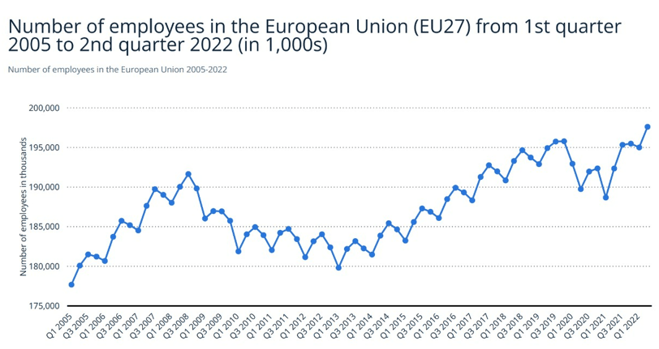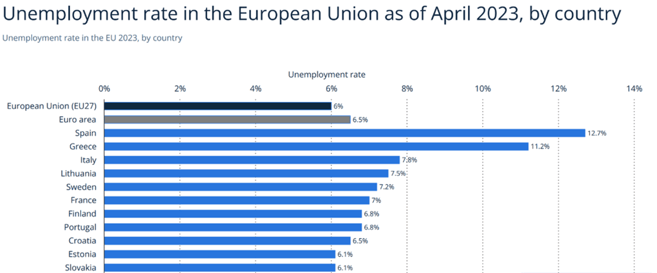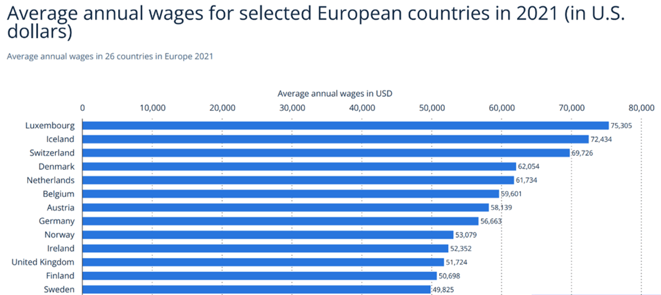EU Employment Insights & Trends With Report
What did the European employment situation look like in 2020? For sure, 2020 was an eventful year. The impact of COVID-19 on employment was definitely visible, as seen in the European Employment 2020 Report. However, navigating challenges in the post-covid landscape, the EU employment entered a promising recovery phase.
In this blog, we provide an overview of some key insights and trends on EU employment.
Insights into the Number of Full-Time Employees in the EU and the UK
Since 2013, the European Union has experienced steady annual growth in the number of full-time employees. In 2020, however, the COVID-19 situation caused a huge decline in the EU employment figures as a result of uncertainty in the international labor market.
Despite that, the EU's ongoing resilience efforts in the post-covid landscape have resulted in a gradual rise in the number of full-time employees in the EU, as is showcased in the graph below.

EU Unemployment Rate – Q2 2023
The average European Union (EU27) unemployment rate is 6%. This is higher than the unemployment rate in the United States, which was 3.5% in July 2023.
Looking at the employment rate of the bigger European companies, we see the following unemployment rates:
- The Netherlands: 3.5%
- United Kingdom: 4.2%
- Poland: 5%
- Germany: 5.6%
- France: 7%
- Italy: 7.8%
- Spain: 12.7%

EU Employment Trend: Working From Home
Working from home, or working remotely, is a development that has been accelerated by COVID-19. This has also been one of the most important HR trends in Europe.
The European countries that have worked from home the most are:
- Finland: 25.1%
- Luxembourg: 23.1%
- Ireland: 21.5%
- Austria: 18.1%
- Netherlands: 17.8%
To have more information on how countries have adapted to the new remote work standard, we invite you to take a look at the full report.
Average Yearly Salary for Full-Time EU Employment
Below, an overview is provided of the average annual salary of full-time employees in European countries. It might not be a surprise that Luxembourg is the league leader. If Switzerland was a selected country, it would have been a competitor.
For more information on the average wages and cost of hiring in Europe, we invite you to read our blog on the Costs of Hiring European Employees.

More information
If you would like to receive more detailed information on EU employment or employment in a specific country, please do not hesitate to contact us. Since 1996, we have helped over 500 businesses with employment and recruitment HR Outsourcing services in Europe. One of our HR Experts would be more than happy to provide you with the necessary information.
Disclaimer: While we strive to provide accurate and timely information, please note that HR policies and regulations can change frequently. It is recommended that you seek guidance from our HR consultants to ensure that the data presented here is current and accurate.
Sources: Statista: Employment in Europe
Category
Related articles
-

Notice Period and Severance Pay in EU Countries in 2025
8 April 2025While specific rules vary from one country to another, they are typically shaped by national...
Read more -

Unlimited Vacation: Who Offers It and Does It Really Work?
3 April 2025Discover the benefits and challenges of unlimited vacation policies and how companies successfully...
Read more -

Building a Dream Team: Comprehensive Guide |Part II
24 March 2025It requires careful planning, nurturing relationships, and a deep understanding of the elements...
Read more

